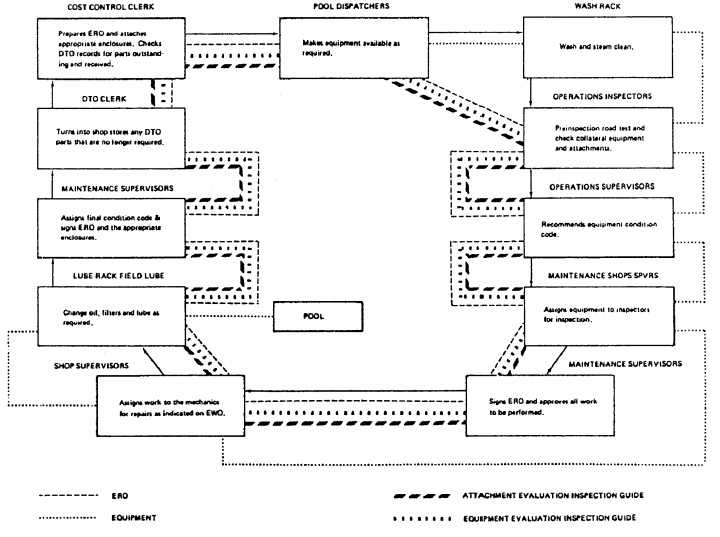The transportation supervisors should track
the status and location of all CESE and Equipment
Evaluation Inspection Guides. At the end of each
workday,
the
operations
and
maintenance
supervisors request a transportation pool status of all
the CESE that are EO inspected, are on the shop line,
are in the shop, and are turned over with new BEEP
stickers. Additionally, you should track CESE that
has been washed, greased, staged, inspected, and
processed through collateral equipage. Enforcement
of good communication between the yard boss,
dispatchers, cost control, and the EO inspectors
enhances the control of equipment and paper work.
Remember, paper work can be easily misplaced.
The transportation supervisors must inform
all the Equipment Operators of the BEEP flow chart
(fig. 1-25). The dispatchers should issue the
Equipment Evaluation Inspection Guide (fig. 1-26) to
the EO equipment inspectors for each CESE
inspected along with the Attachment Evaluation
Inspection Guide (fig. 1-27), when required. The EO
inspectors follow the procedures outlined on the
inspection guides, and when completed, take the
CESE to collateral equipage. The collateral equipage
is jointly inspected by each collateral custodian,
noting condition and deficiencies of collateral
equipage for each CESE inspected. Both custodians
must sign the inspection guide. The Equipment
Evaluation Inspection Guides are delivered to the
Alfa company operations supervisors who issue an
Equipment Condition Code (fig. 1-28) for all CESE
inspected by the EOs. The EO inspectors park the
CESE on the shop line and take the paper work to cost
control. The Equipment Operators must complete all
Figure 1-25.—Battalion Equipment Evaluation Program (BEEP) Flow Chart.
1-32

